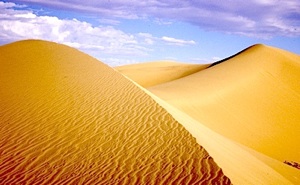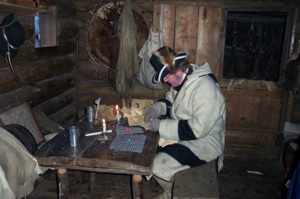Just because winter is on its way and the weather is turning gray and colder doesn't mean there aren't great places to enjoy in the National Park System in the coming months. Here are some random suggestions.
* Go underground at Mammoth Cave National Park. The temperature isn't going to change, and falling rain or snow won't land on your head and shoulders.
* Explore the dune fields at Death Valley National Park during the winter, when much cooler temperatures make it safer for you to take long walks in the sand than during the summer months, when temperatures creep up to, and over, 110 degrees Fahrenheit. It's also a great time to tour Scotty's Castle.
* Keep an eye on the weather, and when a N'oreaster dumps snow on Acadia National Park off the coast of Maine grab your skinny skis and snowshoes and take to the Carriage Paths.
* Winter's the season to visit Big Cypress National Preserve and Everglades National Park in Florida. The dry season has arrived, bugs are less pesky, and birds are nesting. Don't forget your camera and sunblock.

Winter's a great time to walk Death Valley's sand dunes. Kurt Repanshek photo.
* Head to Valley Forge National Historical Park, preferrably during a snowstorm, to look at the cabins and try to imagine what it was like for Gen. George Washington and the Colonials during their winter encampment of 1777-78.
* Schedule a trip to Point Reyes National Seashore to see how the elephant seals are doing.
* Head for Paradise at Mount Rainier National Park with your skis, snowshoes, or tube for snowplay.
* Wait for an extended cold snap and then venture to Apostle Islands National Lakeshore to explore the ice caves there.
* Stop by the New Orleans Jazz National Historical Park on a Wednesday or Saturday and enjoy some live music.
* Visit Thomas Edison National Historical Park in New Jersey and see how the inventor and his wife would decorate their home, Glenmont, for the year-end holidays with greenery and poinsettias.
* Trek to Fort Clatsop in Lewis and Clark National Historical Park at Astoria, Oregon, and see who's dressed out in buckskins and listen to how Lewis and Clark wintered over in the fort.
* Watch the weather forecast and when a Pacific storm is brewing, head to Kalaloch Lodge at Olympic National Park to storm watch.
* If you hate hot weather, winter's the perfect time to go backpacking in Saguaro National Park. Daytime high temperatures at Manning Camp, which is set at 8,000 feet in the Saguaro Wilderness, average about 48 degrees, while night-time lows dip to the high 20s.

Visit Fort Clatsop to see what the traders are up to. NPS photo.
* Stay at home, fire up your computer, gather the family and watch an archived dive program from Channel Islands National Park, where rangers take you underwater and into the kelp forests.
* Like Glacier National Park? There's some great snowshoeing and skinny skiing there in the winter months.
* At Voyageurs National Park, they pass the winter months snowshoeing, cross-country skiing, snowmobiling, and ice fishing.
* Walk the shorelines of Indiana Dunes National Lakeshore and check out the "shelf ice" created when Lake Michigan freezes over.


 Support Essential Coverage of Essential Places
Support Essential Coverage of Essential Places







Comments
Since you mentioned snowshoeing, I'd note that there are ranger led snowshoeing trips at several of the parks you mentioned, as well as at some West Coast parks such as Yosemite NP, Lassen Volcanic NP, and Olympic NP.
Or, if you have the skills, climb a mountain at Rocky Mountain.
In addition to Saguaro, other warm-state backpacking options include the Guadalupes and Big Bend.
I would suggest more than watching an "archived dive program" at Channel Islands National Park. While the park is always tricky to visit, before long the plants will be blooming, and the islands are already green. Keep an eye on the weather, because storms do visit the area and impede travel, but the very best weather in the park are the intervals between storms.